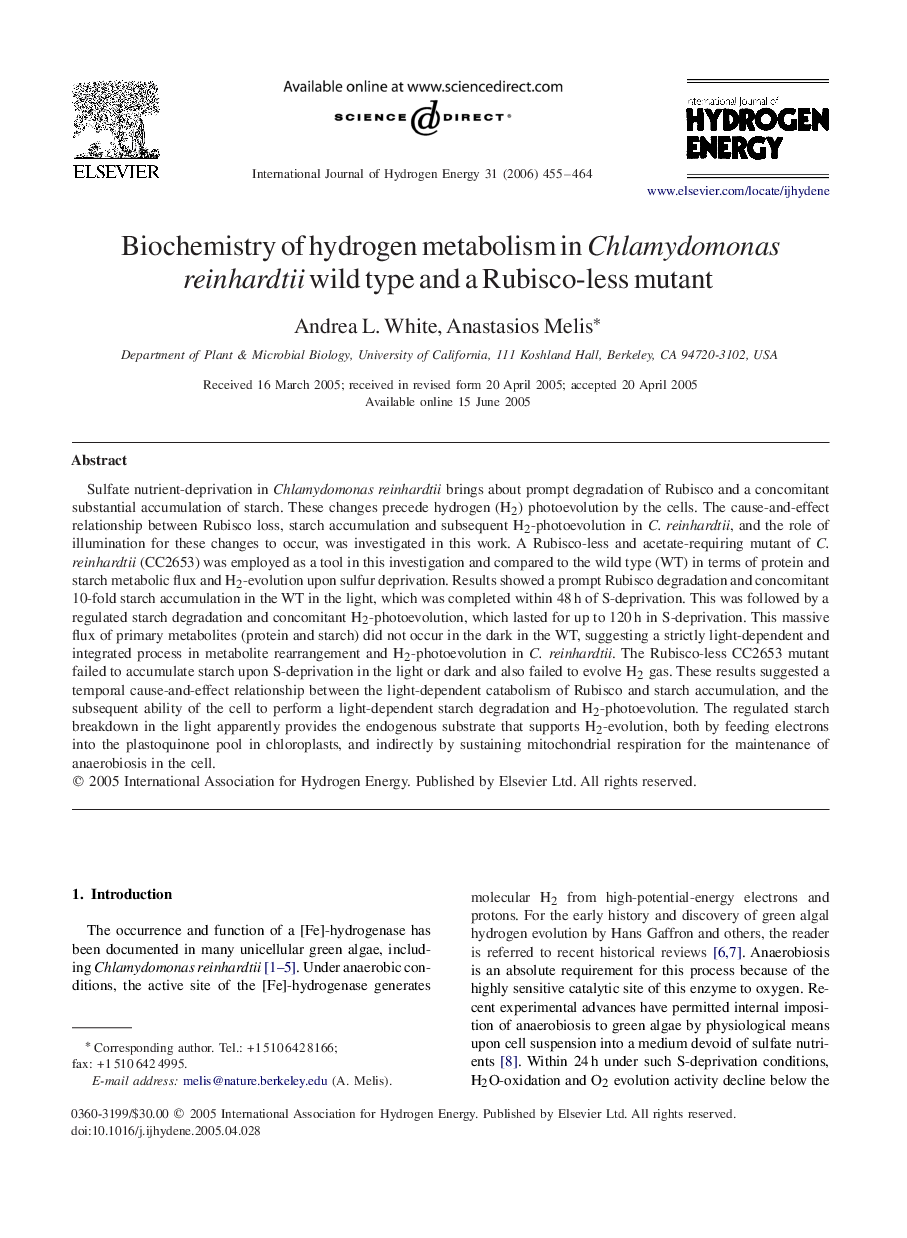| کد مقاله | کد نشریه | سال انتشار | مقاله انگلیسی | نسخه تمام متن |
|---|---|---|---|---|
| 1280808 | 1497694 | 2006 | 10 صفحه PDF | دانلود رایگان |

Sulfate nutrient-deprivation in Chlamydomonas reinhardtii brings about prompt degradation of Rubisco and a concomitant substantial accumulation of starch. These changes precede hydrogen (H2H2) photoevolution by the cells. The cause-and-effect relationship between Rubisco loss, starch accumulation and subsequent H2H2-photoevolution in C. reinhardtii, and the role of illumination for these changes to occur, was investigated in this work. A Rubisco-less and acetate-requiring mutant of C. reinhardtii (CC2653) was employed as a tool in this investigation and compared to the wild type (WT) in terms of protein and starch metabolic flux and H2H2-evolution upon sulfur deprivation. Results showed a prompt Rubisco degradation and concomitant 10-fold starch accumulation in the WT in the light, which was completed within 48 h of S-deprivation. This was followed by a regulated starch degradation and concomitant H2H2-photoevolution, which lasted for up to 120 h in S-deprivation. This massive flux of primary metabolites (protein and starch) did not occur in the dark in the WT, suggesting a strictly light-dependent and integrated process in metabolite rearrangement and H2H2-photoevolution in C. reinhardtii . The Rubisco-less CC2653 mutant failed to accumulate starch upon S-deprivation in the light or dark and also failed to evolve H2H2 gas. These results suggested a temporal cause-and-effect relationship between the light-dependent catabolism of Rubisco and starch accumulation, and the subsequent ability of the cell to perform a light-dependent starch degradation and H2H2-photoevolution. The regulated starch breakdown in the light apparently provides the endogenous substrate that supports H2H2-evolution, both by feeding electrons into the plastoquinone pool in chloroplasts, and indirectly by sustaining mitochondrial respiration for the maintenance of anaerobiosis in the cell.
Journal: International Journal of Hydrogen Energy - Volume 31, Issue 4, March 2006, Pages 455–464